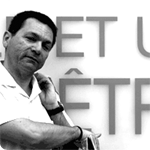lundi, 19 janvier 2009
Branding medicine - As potent as its moniker
From The Economist print edition - Jan 16th 2003
The success of new drugs depends increasingly on what they are called
A DECADE ago, Pfizer turned to Interbrand Wood, a consultancy, to find a catchy name for its new medicine to treat erectile dysfunction. The challenge, according to Rebecca Robins, head of the consultancy's health-care division in London, was to invent a name with enough popular appeal to overcome the stigma associated with impotence, yet serious enough to appeal to doctors. The firm eventually came up with "Viagra". Suggesting vigour and strength, it also rhymes with Niagara, evoking images of free and forceful flow.
Eli Lilly is taking a different tack with its new anti-impotence drug, being launched later this year. Lilly's product acts in basically the same way as Viagra, but it is longer-lasting. Instead of having to be popped just before intercourse, like Viagra, Lilly's product can be taken in the morning, and the evening can be left to look after itself. Interbrand Wood, which also christened Lilly's drug, has tried to reflect this potential for spontaneity and intimacy in its choice: "Cialis", whose soft sounds are a far cry from the hardness of Viagra.
Click here
Meanwhile Bayer and GlaxoSmithKline (GSK), two European firms also planning jointly to introduce a drug for erectile dysfunction this year, have hit upon Levitra for their product. GSK says it plays upon the words "le"
(French for "the") and "vita" (Latin for "life"). The name's resemblance to "levitate", however, is also a powerful reminder of the drug's primary function.
Years ago, christening a new drug was a much simpler affair, with company scientists creating monikers that somehow reflected the drug's chemical composition or biochemical mode of action. This is still true for the early stages of a new drug's development. When drugs begin life as molecules in a test-tube, they are usually assigned basic product codes, such as GW695634, GSK's reference for its new anti-HIV medicine, now in early testing. When a molecule is shown to have some useful activity, it is given an international non-proprietary name (INN), based on internationally agreed rules, which is submitted for approval to a special committee at the World Health Organisation.
Creating a strong brand is especially important for drug promotion in America, where companies can advertise directly to patients
By the time their shiny new products reach early clinical trials, drug companies increasingly turn to outside agencies (and spend as much as
$200,000) to devise brand names that convey more than simple science.
Creating a strong brand is especially important for drug promotion in America, where companies can advertise directly to patients and there are many "me-too" rivals acting on the same disease in much the same way.
Like most branding, drug names follow fashion. Thirty years ago companies wanted their products to start with the letter "A", because they would be the first that doctors would stumble across when leafing through their prescribing compendiums. In the 1980s, names beginning with "Z", such as Zantac, Zocor and Zovirax, were all the rage. "Today, V is the new Z,"
according to Ms Robins-hence names like Vfend and Viagra.
The problem, according to Anthony Shore of Landor, another brand consultancy, is that good names are increasingly hard to find. There are roughly a million pharmaceutical and medical trademarks registered in America, and more elsewhere. So devising a short, snappy name for a product that will be acceptable around the world is a challenge.
Merely inventing a unique name for a drug that is legally available and culturally acceptable is also not enough: such trademarks must also be approved by regulatory agencies in America and Europe to ensure that they are not easily confused with other drugs, nor promise more than they can deliver. Lilly, for example, originally chose to call its new anti-sepsis drug Zovant, a name which America's Food and Drug Administration (FDA) rejected on the grounds that it was too similar to those of two existing
drugs: Zofran for nausea, and Zosyn, an antibiotic. Lilly renamed its product Xigris instead.
The firm did not have much luck with Forteo either. The name was chosen for its new anti-osteoporosis medicine, and was accepted by the FDA. But it was rejected by the agency's transatlantic counterpart, the European Agency for the Evaluation of Medicinal Products (EMEA), because the word is associated with "strength" in Italian and Spanish, and therefore constitutes unacceptable promotion.
The FDA currently rejects about a third of all trade names submitted. Given language differences across Europe, getting a single name through the European Union is even harder. One company had to rethink the name of a medicine it hoped to call Atrelar when it turned out to mean "to leash" in Portuguese.
Martin Harvey of the EMEA points out that things will only get trickier in Europe as the Union expands and brings in countries with non-Latinate languages. This is on top of the trouble that pharmaceutical giants increasingly encounter as they try to push their products into China and other Asian markets, with very different linguistic traditions and cultural associations. Coming up with a blockbuster name may soon be almost as tricky as coming up with a blockbuster drug in the first place.
"Thank you Eric for this information" PC
10:18 Publié dans Actualités et articles (presse et recherche) | Lien permanent | Commentaires (0) | Tags : branding, medicine, drugs, moniker, creating name, name creation, nymeo




